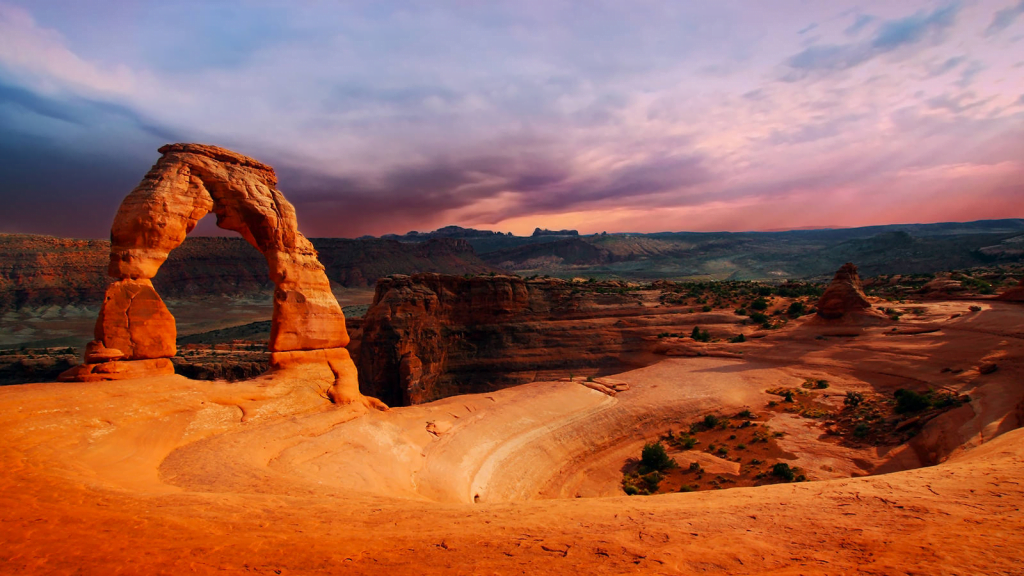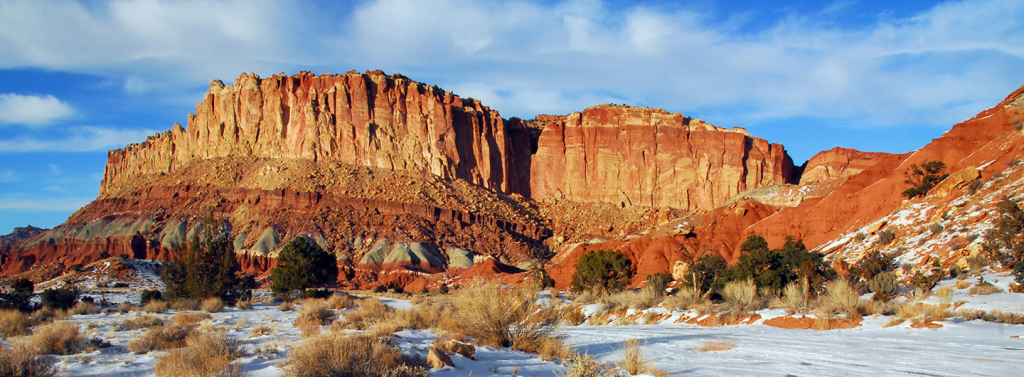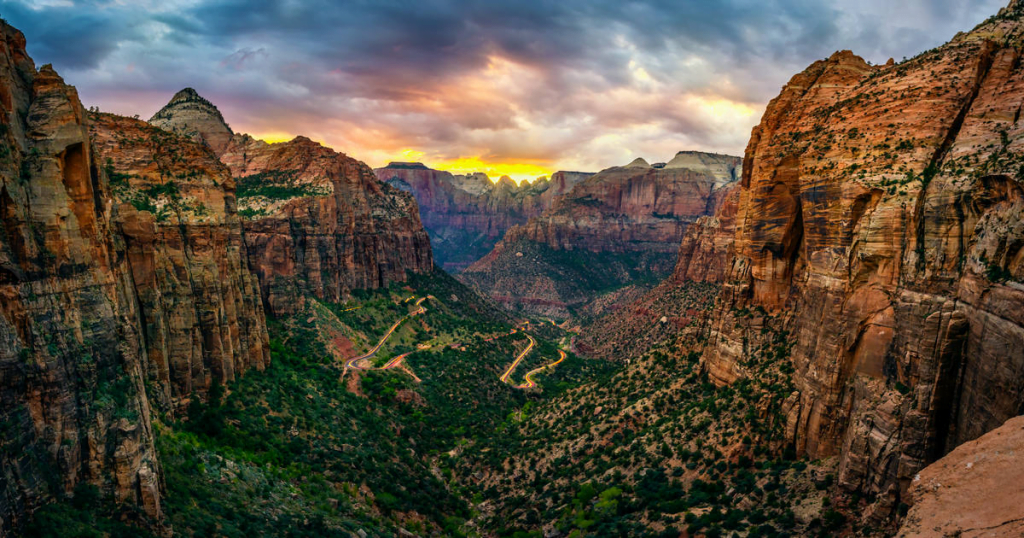The Antelope Island Conservation Area on Bear Lake is the largest Island in the Great Salt Lake and is a habitat for bighorn sheep, Pronghorn, and Bison. The National Parks in Utah also contains interpretive sites of an 1858-1861 U.S. Army camp. The Island also features the only dune field on the Colorado Plateau. It adjoins the 2,965-acre Deer Creek Reservoir, a historic site first crossed by the Mormon pioneers and Donner Party. Here at Towards Travel writings, we will tell you about National Parks in Utah.
- Canyonlands National Park
- Arches National Park
- Natural Bridges National Monument
- Capitol Reef National Park
- Zion National Park
- Bryce Canyon National Park
Canyonlands National Park
Canyonlands National Park is a gorgeous place to visit, and a day here is sure to be filled with unforgettable experiences. The park can be seen on foot, horseback, on a mountain bike, or by four-wheel drive vehicles. The park is also famous for its stunning night sky, with low light pollution and excellent air quality.
This park is divided into three different districts, each with its distinct landscape, number of visitors, and facilities. Travel between the different sections can take several hours. In the Horseshoe Canyon unit, you can view some fine Indian pictographs. Afterward, head up the Green River Overlook at 6,000 feet.

The best time to visit Canyonlands depends on your interests, but it’s best to avoid the high season and stay in the spring or fall. Otherwise, the climate can be scorching and crowded. Occasionally, you might even get snow. The best time to visit is a day when you’re able to see the park’s highlights. If you have more time, a three-day trip to Canyonlands can include exploring the Island in the Sky mesa and driving part of the White Rim Road.
Canyonlands is a large desert park located in the southeastern part of the state of Utah. It is 527 square miles and is located southwest of Moab and Arches National Park. The Northern and Central Needles and Maze areas of the park are separated.
Arches National Park
The weather in Arches National Park can be hot in the summer, with temperatures ranging from over 100 degrees Fahrenheit to fifty degrees at night. Some parts of the park get snow in the winter, so you’ll need to bring warm clothes and proper footwear.
Numerous national parks, including Arches, Bryce, and Zion National Parks, are located in southern Utah. You will want to carry plenty of water and sunscreen because the region can get quite heated. Many of the parks also have hiking trails. A full day is usually enough to do all the scenic drives, but some require more time. Arches National Park features some of the country’s most stunning red rock scenery among Utah’s national parks. To get there, head to the town of Moab, located near the park’s entrance on US 191 and I-70. There, you’ll find the park’s seven arches carved by water.

Within Arches National Park, there are numerous hiking trails. The Devil’s Garden Trail is a popular choice. It’s a mile-long trail that’s easily customizable for different fitness levels. There are also primitive trails, which require light scrambling and trail finding.
Natural Bridges National Monument
A digital geologic map of the Natural Bridges National Monument in Utah is a valuable tool for understanding the natural and cultural history of the region. The digital map was created using numerous published and unpublished geologic maps. The map also contains data pertinent to resource management and scientific study. A report also accompanies the map.
You can reach the Monument nearby Bluff, Monticello, and Blanding communities. These towns all have convenient access to Highway 95, which leads to U.S. Highway 191. You can take Highway 275 to the monument from the highway; you can explore the surrounding area by hiking and canoeing.

Public access to the monumentMonumentlable all day. 9 a.m. to 5 p.m. is when the visitor center is open. The visitor center offers information about human history, plants, wildlife, hiking trails, and drinking water. It is possible to camp overnight in the park, but it is recommended that you plan a day trip to get the most out of your visit.
The pinyon-juniper mesa is a prominent feature in the lower part of the monumentMonumentcovered with communities of cryptobiotic soil crusts that prevent soil erosion and maintain soil nutrients. Several trails lead to key archaeological sites, including an overlook.
Capitol Reef National Park
In south-central Utah is Capitol Reef National Park. It features layers of golden sandstone and canyons that surround striking rock formations. Some of the park’s most notable features include the Chimney Rock pillar and the Hickman Bridge arch. The Cathedral Valley monoliths are also noteworthy landmarks.
In addition to the cliffs and natural wonders, Capitol Reef National Park contains a 65 million-year-old warp in the earth’s crust, exposing layers of rock and fossils. The fold was formed when two continents collided, revealing layers of rock and varying stones. The canyons and pillars are full of vivid colors and contrasting rock layers.
Visitors can participate in various activities and events during their visit to Capitol Reef National Park. The Boulder Mountain Half Marathon and the Bicknell International Film Festival are just a few unusual circumstances in the region yearly. There are many hiking trails and other activities in the vicinity for anyone who enjoys outdoor pursuits.

Generally, the climate in Capitol Reef National Park is dry. Nighttime temperatures drop into the low 40s. The coldest months are November to March when temperatures remain below freezing.
Zion National Park
Zion National Park, a nature reserve with sharp red cliffs, is found in southwest Utah. The park’s main section features the Zion Canyon Scenic Drive, which leads to trails along the Virgin River. The river flows past the Emerald Pools, which feature waterfalls and a hanging garden. The Virgin River also features the Zion Narrows Wading Trail, which follows the river’s path.
900 plant and animal species can be found in the park. Its pristine natural landscape is so enticing that it evokes feelings of awe and responsibility that are difficult to express in words. People have lived in Zion for countless years. The Paiute people called it Mukuntuweap, which means “canyon,” or “home.”
Zion National Park is home to 229 square miles of beautiful natural scenery. The park contains four zones home to a range of wildlife. It is home to 289 bird species, 75 mammals, and 32 reptiles. Mammals can be seen in the park’s riparian and woodland areas. These include gray foxes, mule deer, rattlesnakes, and coyotes.

Although Zion is beautiful year-round, the best time to visit the park is during the fall and spring. The temperatures are generally mild during these months, but the park can become extremely hot in the summer. Avoid swimming and drinking untreated water while visiting Zion National Park. This can lead to cyanotoxin exposure, which is dangerous and can even kill you.
Bryce Canyon National Park
One of the U.S.’s national parks is Bryce Canyon. This park is relatively small compared to the neighboring Capitol Reef and Zion National Parks. If you are interested in hiking in this park, you should plan your trip accordingly. You can take a ranger-led tour or hike on your own – the choice is up to you! The park website has detailed information about the hiking trails and schedule.
Bryce Canyon National Park has one of the world’s largest collections of hoodoos, eroded rock spires reaching up to 200 feet. The park is located on the eastern side of the Paunsaugunt Plateau and is a natural amphitheater with varying elevations and three vegetation zones.
Besides the canyons, Bryce Canyon National Park also has several natural arches. One of these is the Natural Bridge, which is made of red rock and contrasts with the green forest below. There is also a nature center where guests can pursue fruit picking. Another popular activity is bird watching.
Bryce Canyon is a great place to go during all four seasons. The park is the warmest during the summer, while fall and winter have the coolest temperatures. The park is accessible all year long, but you should make reservations before you go. Several campgrounds are located within the park.






